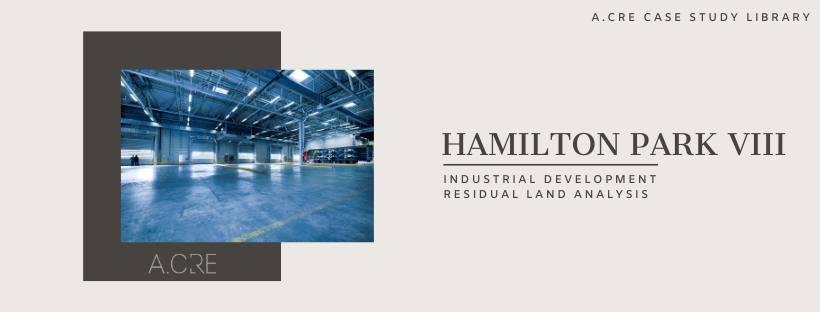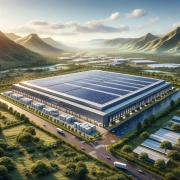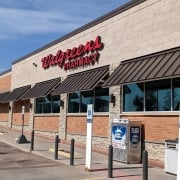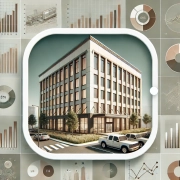Case Study #6 – Hamilton Park Phase VIII (Case + Solution, Updated June 2024)
This is the six in a series of commercial real estate case studies shared by A.CRE. These case studies are meant to help you practice mastering real estate financial modeling. Hamilton Park VIII puts you in the role of a development associate at an international industrial development firm, tasked with assessing the fair value of land allocated to a given phase of industrial development.
Practice makes perfect!
Each case study shared in this series mirrors real world situations, either in terms of the types of deals you will look at in various roles or the types of modeling tests you’ll be required to perform as part of the interview process. You can browse this and other case studies in the A.CRE Library of Real Estate Case Studies.
Are you an Accelerator Advanced member? Download this case study, solution files and watch the solutions video in the Career Advancement Endorsement. Not yet an Accelerator member? Consider enrolling today in the Accelerator, the industry’s go-to real estate financial modeling training program used by top companies and elite universities to train the next generation of CRE professionals.
HAMILTON PARK VIII – THE BACKGROUND
You are a Senior Development Associate at Eastern Development Corp, a privately held real estate development firm specializing in the ground-up development of Class A logistics, fulfillment centers, and data centers throughout Europe, the United States, and Mexico. You have been with the company just shy of four years, starting as an analyst at the firm straight out of university.
Eastern Development currently has offices in London, Frankfurt, Madrid, Los Angeles, Chicago, and Mexico City. Since the company’s inception in 2001, Eastern has built over 13 million square metres of industrial real estate across its target markets. The company’s tenant base consists largely of multi-national corporations, third-party logistics firms, e-commerce subsidiaries of large retailers, internet-only retailers, and cloud-focused technology firms.
In 2014, Eastern Development acquired a 55-hectare parcel of land with the intention of developing 185,000 square metres of class A industrial across eight buildings. The project has moved along smoothly, with six buildings built and stabilized to date. Building seven recently broke ground as a build-to-suit for e-commerce giant Sahara, Inc. And so it’s time to begin analyzing building eight.
HAMILTON PARK VIII Industrial Development Case Study– THE DETAILS
With the first seven buildings underway or completed, it’s time to begin planning for the last and final building – Hamilton Park VIII. Eastern Development has partnered with a large pension fund (i.e. the “Venture”)to develop phase VIII. A life insurance company will provide a 60% LTC construction loan, and the pension fund partner will provide 95% of the required equity. Eastern will provide the remaining 5% of required equity.
As part of the financial analysis, one of the first steps is to assign a price to the proportion of land allocated to this phase. Because Eastern Development purchased the land solely back in 2014, it’s not appropriate to assign the cost basis of the land to the Venture. Instead, an analysis must be done to determine a fair value for the land; a value at which the venture will purchase the land from Eastern Development.
THE ASSUMPTIONS
Below find the relevant assumptions to use in your analysis.
Property Description
- Land size: 66,750 m2
- Building size: 23,104 m2 (152 m2 x 152 m2)
- Clear height: 11 metres
- Column spacing: 16 metres
- Cross-dock building design
- Dock doors: 72
- Parking spaces: 210 automobile, 60 trailer
- 5% office
Timing
- Land purchase: Month 0
- Construction: 9 months
- Tenant rent commencement: Month 13
- 1st stabilized month per JV agreement: Month 16 (3 months following rent commencement)
- Sale month: Month 24
- Analysis period: 2 years (Month 0 – Month 24)
Development Costs
- Land purchase price – TBD
- Land closing costs – 2/m2
- Land improvement costs – 50/m2
- Shell construction – 550/m2
- Soft costs – 58/m2
- Tenant improvements – 100/m2
- Leasing commissions – 40/m2
Operating Assumptions
- Tenant base rent: 65/m2
- Tenant responsible for taxes, insurance, common area maintenance, building structure, and roof
- Annual bumps: 2%
Valuation Assumptions
- Market cap: 5.00%
- Selling cost: 2%
THE TASK
Assuming the Venture targets a Development Spread of 150 bps, what is the fair value you would assign to the land?
Recent land comps in the area have shown entitled land in comparable industrial parks to trade in the 65/m2 – 70/m2 range (Per m2 of land). Is your fair value supported by comparable sales?
HAMILTON PARK VIII Industrial Development Case Study – EXTRA CREDIT
Assuming a land purchase price that results in a Development Spread of 150 bps, what is the unlevered IRR of the investment over the two-year hold period? What is the unlevered equity multiple?
Create Your Own Case Study
This industrial development case study offers a view of the strategic decisions involved in a land development residual land analysis. As you apply the provided data and strategies in your financial models, you’ll gain insights into optimizing asset value and ensuring investment criteria are met, key skills for any CRE professional. For those looking to deepen their expertise, our Real Estate Case Study Creator provides a platform to test and enhance your modeling skills in a controlled, realistic setting. This GPT creates completely custom real estate case studies from scratch and allows users to craft case studies to simulate scenarios they are interested in or expect to encounter in their professional lives. This customization allows users to focus on particular areas of interest or challenge, making the practice sessions as relevant and effective as possible. We encourage both seasoned practitioners and newcomers to use this resource to refine their approach and decision-making in commercial real estate investments.
- Note: Custom GPTs are now available to both paid and free users of ChatGPT. Click here to learn more.
Download the Case PDF + Solution XLS
In addition to the web-based case, we’ve created a PDF version to download and use offline. Additionally, we’ve added a solution created by Spencer and Michael. Note that the solution may contain errors – if you spot an error, please let us know and we’ll roll out an update.
As with our real estate financial models, this case study and solution are offered on a “Pay What You’re Able” basis with no minimum (enter $0 if you’d like) or maximum (your support helps keep the content coming). Just enter a price together with an email address to send the download link to, and then click ‘Continue’.
We occasionally update these cases and solutions (see version notes). Paid contributors will receive lifetime access to the case, solution, and all updates.
Version Notes
v1.0
- Initial release
Frequently Asked Questions about the Hamilton Park VIII Industrial Development Case Study









